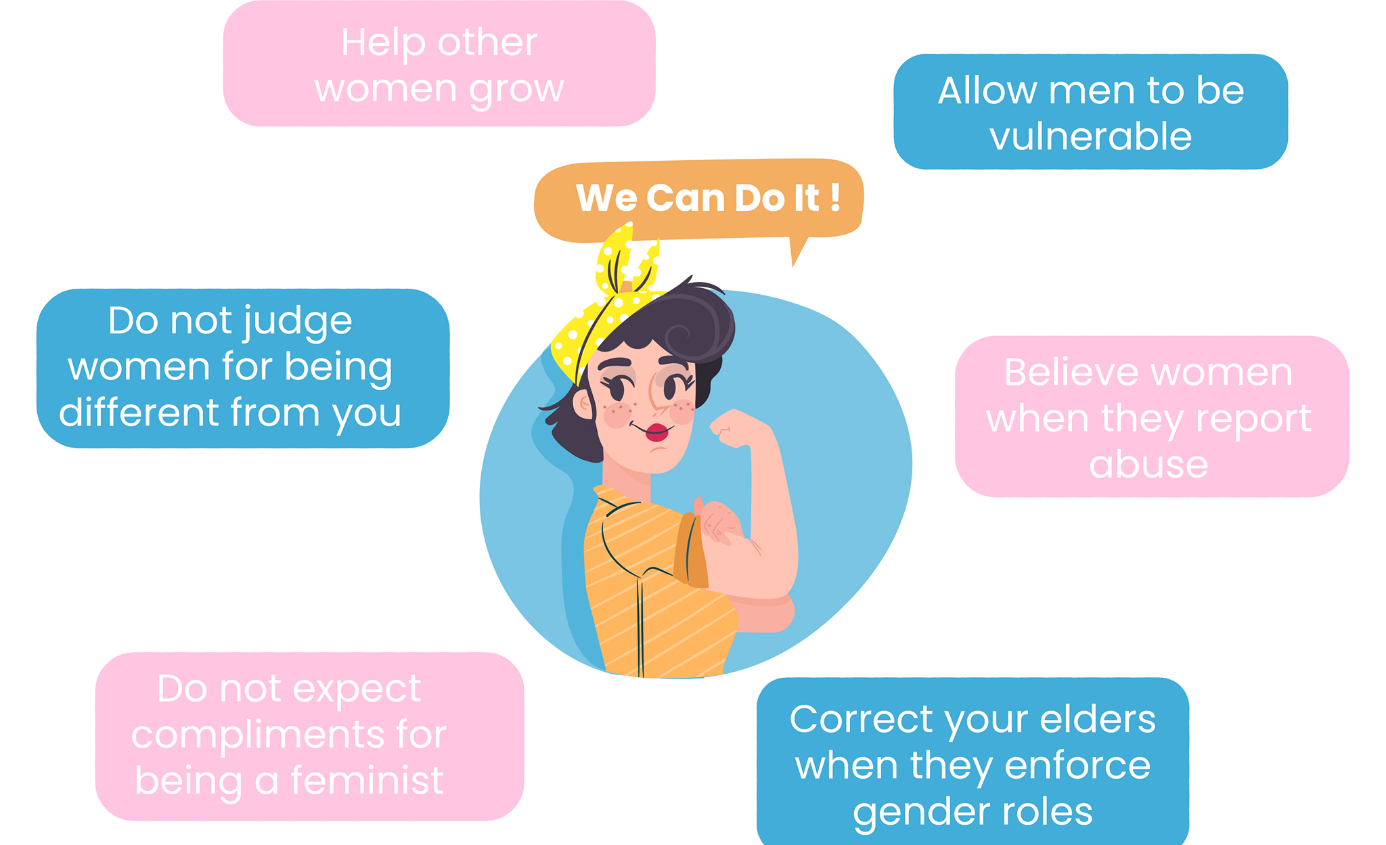By Carmen Chang,
According to the philosopher Ludwig Wittgenstein: “The limits of my language are the limits of my knowledge”, as our mother tongue would condition our worldview. In the same vein, Meseguer argues that language shapes the mentality of speakers; however, Jorge E. Lemus (2011: 12) contends that:
“This hypothesis implies the opposite of the Whorfian hypothesis that the worldview is influenced by language. My hypothesis suggests that it is society that shapes the use of language, making it reflect its worldview. Note that I do not affirm that society shapes the structure of language, but its use. With this conceptual twist, language is stripped of all blame for its sexist features since the sole responsible for any sexist trait in language is society; that is, us, the language users”.
To this, we can add what Héctor Velis-Meza (2020:43) asserts, stating that thought and language are entirely interconnected:
“Words are an extension of the brain. They are the mirror of action […] Words are cognitive representations of the things and actions of the world around us. They serve for us to communicate, and human intelligence has endowed this exchange of information with unlimited capacity, which, however, is inevitably conditioned by the collectivity where it is generated. As human communication is a consequence of intellect and imagination and an expression of its sensitivity and social empathy, words do not remain indifferent to this phenomenon and, over time, could even change their meaning”.

Lemus (2011: 12-13) states that there is evidence of sexism in language and that this is a reflection of society, in which men and women have established roles and patterns and a particular way of speaking, and the power position of men is reflected in language. A language could not, then, be considered sexist because of its structure, but because of its use; that is, it is the language users who show sexist traits in their language use. To speak properly about this topic, one would first have to understand the power relations between men and women established by society and how these are evident in language; and then, one would have to analyze the conversational, cultural, and linguistic distinctions between both sexes.
In relation to the aforementioned, we can add what Héctor Velis-Meza (2020:43) affirms:
“Language has always been the faithful reflection of the society that shelters it, of its vicissitudes, its historical periods, its preferences, its fears and rejections, of the dominant or submissive positions that nest within it, which gradually leave a mark of their time, their eventualities, and the singularities that end up becoming their hallmark”.
Regarding the invisibilization of women supposedly produced by the use of the “generic masculine”, Álex Grijelmo, in his article “Does our language make women invisible?” argues that, for some, the generic masculine perpetuates the patriarchal system, while others do not equate gender with sex:
“Those who understand that the generic masculine ‘makes women invisible’ bring into play legitimate emotional factors, based on an unjust reality, and project onto language some problems and discriminations that occur in areas outside of it. In this way, male dominance in society is presented as the origin of male dominance in grammatical genders. […] If the dominance of the male sex in society were the unequivocal cause of the predominance of the masculine gender in language, this would have to occur under all kinds of conditions. […] However, we can all observe that with the same language, there are both sexist societies and societies closer to equality. Widely spoken languages like Spanish or English offer many possibilities in this regard. On the other hand, if there were such a relationship between male social dominance and the use of the masculine generic in language, societies that speak ‘inclusive’ languages should be less sexist. For example, the Hungarian language has no gender, from which it should be deduced that Hungarian society is more egalitarian than Spanish society. The same goes for Turkish, a language with very few gendered words. And with Persian (or Farsi), the language spoken in Iran. If Iranian society has not given rise to a language of male dominance, that should be related to the supposed reality of a society less masculine than the Spanish one. The same goes for Quechua, used by a society that was polygamous and where harems functioned. There are also languages spoken in the world that have the feminine as generic (several Caribbean languages, including Guajiro; in addition to Koyra in Mali and Afar in Ethiopia), and they do not correspond precisely to egalitarian or matriarchal societies. For example, Zaise or Zayse is spoken by 30,000 Ethiopians who form a ‘markedly patriarchal social organization’. However, other languages with generic feminine, such as Mohawk or Mohawk (now 3,000 speakers in the US and Canada), did exist in societies with notable matriarchal traits”.
A particular case was that of Washo women, who, despite having some power in society, patriarchy prevailed. The same happens with other communities characterized by being more egalitarian societies, such as the Lovedu of Africa or the Iroquois of North America. In these cases, despite women having the same power and access to commercial exchanges similar to men, the latter have greater power, since they are considered the owners of the land.

Thus, Álex Grijelmo opines that considering a language as sexist is a projection of the speakers’ own sexism present in society. However, in the opposite position, we find Mayte Rius (2017) who, in her article “The sexism hidden in words,” argues that legal equality between women and men was achieved many years ago, but in many contexts, women continue to be treated differently, and this also includes the linguistic field, where many sexist marks are still used. The author adds the following:
“Reason should not be lacking when even the most conservative linguists admit that sexist language uses must be corrected, avoid lexicon that is discriminatory, and feminize the positions and professions held by women, but, on the other hand, all initiatives aimed at giving more prominence to women in speech that affect grammar arouse controversy and do not quite take hold. The use of the feminine to refer to men and women is still the same form of discrimination towards the other sex, but there are political formations and opinion groups that use it as a form of protest and provocation to show that language is not neutral and that the gender of words matters. ‘When in a mixed gynecology congress, the feminine is used, and some gynecologist complains because he feels excluded, it must be that gender is indeed important, so it should also be considered as such for women’, exemplifies sociologist Marina Subirats”.
Language is constantly evolving, and many terms fall into disuse or acquire another connotation over time and through social transmutations:
Language is a living entity that evolves and leads to the fact that over time, words can vary, renew, alter, or modify their meaning, in order to adapt to their time and social changes. It is people who create the language and can expand it, impoverish it, or adjust it to their aspirations.
So, if, as we have been saying, language evolves and changes to adapt to new realities, why is there so much reluctance to accept changes that seek to end linguistic sexism and aim for women to achieve real equality in this area?
References
- Jorge E. Lemus. “Sexismo en el lenguaje: mitos y realidades”. Memorias del Encuentro de la Red Centroamericana de Antropología. pp 195-225.
- Héctor Velis-Meza. Cómo el machismo contaminó el lenguaje: Historias de palabras que perdieron su inocencia. Ediciones Cerro Huelén. Santiago de Chile. 2020.
- Álex Grijelmo ¿Invisibiliza nuestra lengua a la mujer? El País. Available here
- Mayte Rius. El sexismo que ocultan las palabras, Op En familia. La Vanguardia. Available here
- Leopoldo Valiñas. La Evolución del Lenguaje (1a parte). Medicatera INAH. Available here




